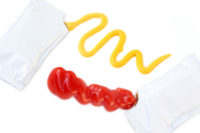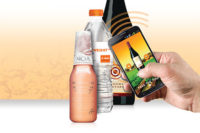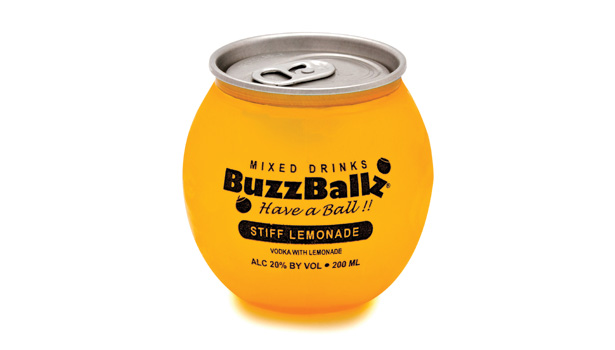Cover Story: Beverage Breakthroughs
The big bad beverage industry
Beverage packaging innovations huff, puff and blow traditional packaging down.














Every day consumers drink various beverages from coffee to milk, water, beer and soda. We use everything from cartons, PET bottles, aluminum cans and pouches for our drinks. The beverage industry is growing, offering more variety in terms of product line-ups and packaging formats to suit just about any consumer.
According to a new market research report from MarketsandMarkets (marketsandmarkets.com) the beverage packaging market will grow from an estimated $97.2 billion in 2012 to $125.7 billion by 2018, at a compound annual growth rate (CAGR) of 4.3% from 2013 to 2018.
The report, "Beverage Packaging Market By Beverage Types (Non-Alcoholic, Alcoholic & Dairy), Packaging Types (Bottle, Can, Pouch, Carton, Draught, Bulk & Others), Material Glass, Plastic, PET, HDPE, Metal, Paper-Board & Others) - Global Trends & Forecast To 2018," also notes opportunities and specific market growth. The report states that growing consumption of alcoholic and non-alcoholic beverages provide a strong customer base for the global beverage packaging market. Efficient and suitable packaging is imperative for every beverage to preserve taste, prevent contamination and garner consumer attention.
Alcohol packaging gets more creative
The alcohol segment, although dominated by bottles and cans, is bound to grow with alternative materials for bottling. This growth is spurring packagers to launch creative and fun packages for wine.
One such innovation comes to consumers in a handbag. You may have watched our video that we created showing you exactly how this ‘wine purse’ works (if you haven’t seen it, follow this link to watch: www.foodandbeveragepackaging.com/handbagwine). Cantina di Soave Viama boxed wines introduced this purse of wine for the fashion-forward consumer. The wine, from Northeast Italy, is contained in a creative bag-in-box application that is shatter-proof, lightweight and recyclable. The convenient and portable box comes equipped with a hands-free shoulder strap for easy pouring and a vacuum-seal to remain fresh after opening for up to four weeks. The wine purse holds 1.5 liters, which is the equivalent to two 750mL bottles of wine.
If the wine handbag doesn’t strike your fancy, maybe a uniquely-shaped bottle of wine will. By now, we have all seen wine packaged in glass, PET, aluminum cans and even pouches, but one company is setting out to change not the traditional wine packaging material, but the shape.
Truett-Hurst Inc., the Sonoma County wine producer of the Truett-Hurst and VML brands, recently launched its all-new line of eco-friendly "California Square" fine wines. California Square wines come bottled in an attention-getting, chic, square bottle. Its distinctive package, created by design firm Stranger & Stranger (strangerandstranger.com), features embossing, vintage graphics and lush deep shades of gold, burgundy and cobalt blue. Each side of California Square offers a different tactile impression, enhancing the sensory aspect of fine wine.
With a unique bottle and distinctive shape, the bottles lend themselves to repurposing. The empty bottles can be filled with olive oils or infused vinegars and can be used as flower vases or candleholders, furthering the life of the package.
It isn’t just wine that’s getting creative to grab consumer’s attention, the spirits industry is also varying its packaging to offer consumers a little fun.
BuzzBallz, LLC (buzzballz.com) has launched a distinctive line of single-serve mixed drinks in PET sphere-shaped ‘cans’. The PET ball is fitted with an aluminum pop-top, which is traditional atop metal cans. The BuzzBallz are unique in that they are freezable, 100% recyclable and able to float. Merrilee Kick, President, BuzzBallz, LLC notes that the company makes the stand out, brightly colored containers themselves, on their own equipment.
“I chose that shape because the sphere is the strongest shape for carbonated pressure, in case I wanted to put carbonated drinks in there. I thought the shape was a key marketing component as well,” says Kick.
Another spirits package is making waves in the industry by packaging its whiskey in a pouch. McCormick Distilling unveils Triple Crown whiskey, the first-ever North American whiskey to offer innovative single and double serve flexible pouches. Whiskey is becoming even a more popular choice for consumers and the pouch package offers a unique way to consume the drink, making it an easy package to take on the go and to use at festivals, parks and outdoor barbecues.
"Bulky bottles and broken glass are a thing of the past with our flexible pouches, which fit easily into your pocket and lay flat on top of packed coolers," says Vic Morrison, vice president of marketing at McCormick Distilling.
Foodservice is all about the beverages
Another growing industry is the foodservice industry. According to the 2013 Trends Report from the Foodservice Packaging Institute (FPI, fpi.org), the institute reveals key industry shifts. Trend number one is: It’s all about the beverages – and their packaging. Foodservice operators are turning to new and expanded beverage options to boost their bottom lines. Polystyrene foam and single-wall paper cups have long dominated, but competition is growing in both the hot and cold beverage container categories.
Berry Plastics (berryplastics.com) recently developed the Versalite to-go cup, an alternative to today’s hot and cold to-go cups that delivers significant performance, experience and environmental benefits. Made from polypropylene, the company states that Versalite is the only disposable hot/cold cup that can be easily recycled while providing the ultimate experience for customers, meeting comfort, design, durability, safety and thermal management needs.
Jon Rich, Chairman and CEO of Berry Plastics says, “The Versalite cup creates the solution consumers have been seeking-- a to-go cup that is recyclable and durable, all the while helping to keep their beverages hot or cold for extended periods.”
The cups are fully recyclable, made from PP, which is considered to be one of the safest materials used in food packaging today and are a solution to the current bans on polystyrene throughout the foodservice industry.
Innovation drips into juice packaging
A new bag in box juice package offers consumers and food industry professionals an easy to use package that fits right into the refrigerator and even pours from the shelf. LEAHY-IFP’s (leahy-ifp.com) Innovation Division announces the Space Saver™ ready-to-drink, 100% juices, teas and lemonades packed in a shelf-stable, 5-liter bag in box package.
Space Saver’s unique aseptic, bag in box package is designed to fit perfectly in any refrigerator while taking up minimal space. The package features an easy-to-use, “no drip” spout delivery system similar to those found in boxed wine packaging.
“Based on increased consumer acceptance of the bag in box format and the increased demand for non-carbonated beverages to fit into tighter shelf spaces, we set out to design a large volume package that was similar to the already popular “fridge pack” for canned soda and beer. What we ended up with is a great portable format that is environmentally-friendly and simple enough for a child use,” states Joe Arends, Leahy-IFP’s Marketing Manager.
Leahy-IFP designed the Space Saver packaging to be as environmentally-friendly as possible. According to Arends, Space Saver utilizes 50% less energy during production and generates 22% less post-consumer solid waste than 64-ounce plastic bottles.
Another new juice package is designed once again for consumer ease of use. This single-serve package aims at making drinking juice on the go even more convenient. Exclusive to the European market, Ampac’s (ampaconline.com) Generation 5 Pull Tab Beverage Pouch is changing how consumers drink from a single-serve pouch. The pouch, an alternative to the commonly used straw-punch beverage pouch, comes with its straw glued to the pull tab. Thus by removing the straw, the tab gets pre-opened at the same time, opening the pouch to allow the consumer to then insert the straw.
With the Pull Tab Beverage Pouch, the straw does not need to be pierced through a film, resulting in less spilling and no risk of piercing through the pouch (or worse, into consumers’ hands). In addition, since the straw no longer has the function of piercing the laminate, the straw can have a larger diameter. This creates a more enjoyable experience, but is also imperative for smoothies and other thick drinks.
The healthy mix of new beverage varieties and packaging formats is spurring the rapid growth of the beverage industry. With more flavor options, package materials and product sizes available, today’s consumer has a plethora of drinkable variety that is certainly catapulting beverages to the big, bad status. Whether its juice, wine, spirits or even foodservice cups, the beverage industry is big indeed, creating momentum with each new launch and leaving traditional packaging behind.
Looking for a reprint of this article?
From high-res PDFs to custom plaques, order your copy today!














